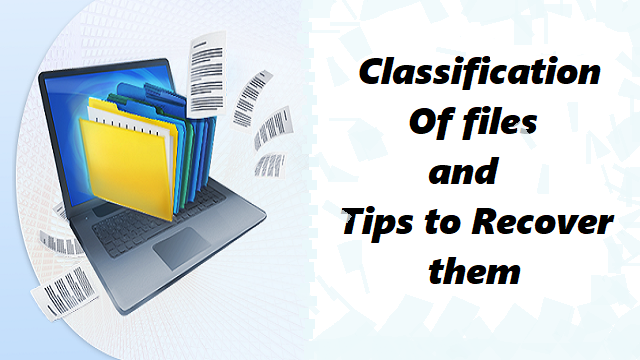Are you looking for ways to preserve vital paperwork? Paper can only last for so many years, even when you preserve it well. This is one reason why people are digitizing their most important documents.
If you read on, you’ll learn how to digitize and why it matters. We also included some options for digitizing other than scanning. Don’t forget to read until the end for some great tips on saving digitized files.
1. What Is Digitization?
Digitization is the process of converting something analog into a digital format. This can be anything from paper documents to images. Digitize something and it becomes a binary code that computer systems and electronic devices can understand.
This doesn’t mean that you won’t be able to understand it. The computer reads the code that it can read first. The computer will then convert it into something you can see and understand on your monitor.
You won’t even know that it became a mess of 1s and 0s on the way back. The analog and other items you converted will remain with you still. However, you also get a digital copy of that item.
2. Which Paper Files Are Most Important?
Before we delve in, let’s talk about what most people consider as important documents. These are the typical documents that the government issues. These are also documents used for identification.
That includes certificates for birth, marriage, and divorce. Identity documents include passports, drivers’ licenses, and Social Security cards. Don’t forget your health insurance cards, immunization records, and prescriptions.
Other important documents include property deeds, insurance policies, and vehicle titles. Make sure you keep digital copies of any wills, trusts, and tax returns. Tax returns should back to the last three years.
Make digital copies of bank account numbers and credit cards. Scanned copies of credit cards should include the issuers’ contact information too. Finally, digitalize a copy of your home inventory.
Business owners should have business documents digitalized as well.
This is a short list of very important documents. If there are more which you think are vital papers, make sure to get a digital copy of them as well.
3. Benefits of Digitizing Your Documents
Now, you already have these documents kept safe. You might ask, why bother? Well, digitizing has many benefits.
This includes securing digitized papers in a place where dampness, fire, or other destructive elements can’t reach them. Plus, converting them into digital files helps tons in space-saving. Nowadays, electronic storage is scalable and very affordable.
You have a smartphone with you at all times, don’t you? Copy these files into your phone. Better yet, think of how convenient it will be for you to keep these files in a cloud you can access any time.
You’d be able to access these documents even when you’re on the move. Plus, you can find these documents with a quick search query. It won’t take you hours to look for them.
A 2018 study found that the average enterprise wastes $2.5-3.5 million per year. Where did they spend all that money on? They spent it all on searching for information and re-creating lost documents only.
To fix that problem, most offices went paperless. It allowed them to cut back on costs and time. Also, it’s an eco-friendly solution.
4. How to Digitize Your Important Papers
Now, let’s talk about how to digitize essential paper documents. We have various approaches. The first one is to scan them.
For this, you can use a desktop scanner or a multi-functional device with a built-in scanner. You can find many types of scanners on the market. They come in all shapes and sizes to accommodate all paper shapes and sizes.
Some models can scan in black and white only while others can scan in color too. Scanners units also have varying speeds, resolution options, and capabilities. Choose one that will suit your scanning needs best.
Scan documents at 300 dpi at least. If possible, save them as a PDF file. If you can’t scan to a PDF, scan papers to an uncompressed TIFF.
After you scan these documents, you can view and edit them in software like Adobe Acrobat Reader. If you’re using Apple products, Adobe PDF Editor is the best free PDF editor for Mac. Make sure you use programs that can read the file format extensions of your digitized files.
Let’s say you have only a handful of paper documents and you need not invest in a scanner. Your next best option is to digitize them with an app on your phone or tablet. The Google Drive app has features that allow you to scan and save documents on the drive.
You can also use the Dropbox app. It’s easy to use but only allows five users. For iPhone users, try Evernote Scannable.
5. Tips on Scanning and Storing Digitized Documents
You’ve got your scanner and your files ready. Are you ready to go digital yet? Before you scan away to your heart’s content, let us give you some pro tips first.
Before you start the scanning process, take inventory of the papers you have. It’s easy to get lost once you start, especially if you have loads of them. If it’s possible to discard some, assess all the documents first to see which ones aren’t that important.
If you plan to scan many more papers, be smart about it. Sort your documents into categorized folders once they’re digitized. Trust us when we say finding them later will be much easier.
Are you scanning bills or tax returns? Be careful in naming each scanned file. As much as possible, use a clear and consistent file-naming system.
If you don’t have the time to do the scanning yourself, you can pay for document imaging services. They’re the best option for bulk file and image digitization. They’ll scan copies and index your documents for you.
Let’s say you’ve got all the files digitized, named, and categorized. There’s many more to go but you find yourself running out of space fast. How will you cope?
Use cloud services to bring your storage capacity up. If you depend on your computer’s storage for bulk files, it might not survive it. However, don’t delete them all from your local storage yet in case you need backup files.
Finally, keep the paper copy safe. Some places might demand a paper copy instead of a digital file. In case you find yourself in this situation, at least you know where to find the document.
Take Advantage of the Digital Times
There’s no telling what can happen to the physical copies of your documents. To ensure they’re kept safe and out of natural disasters, convert them to digital files. This way, you can keep both physical and digital copies with you.
Follow these tips to learn how to digitize your most important documents. Did you find this post enjoyable and educational? If you want to read more posts like this, feel free to see our other guides.







